Introduction of Hanumangarhi Temple Ayodhya
Hanumangarhi Temple, located in the ancient city of Ayodhya, holds immense significance in the hearts of devotees of Lord Hanuman and Lord Rama. Known for being the birthplace of Lord Rama, Ayodhya is among the holiest cities in India. The Hanumangarhi Temple Ayodhya is a must-visit for pilgrims and tourists alike, offering a blend of spirituality, architectural grandeur, and historical relevance. This majestic temple is not only revered for its religious importance but also celebrated for its unique architecture and deep historical roots that date back to the 10th century.
A pilgrimage to Ayodhya is incomplete without visiting the famous Hanumangarhi Temple, which sits atop a hill and offers a panoramic view of the city. For devotees, Hanumangarhi symbolizes the undying loyalty and devotion that Lord Hanuman had towards Lord Rama, making it a vital part of Ayodhya’s religious landscape.
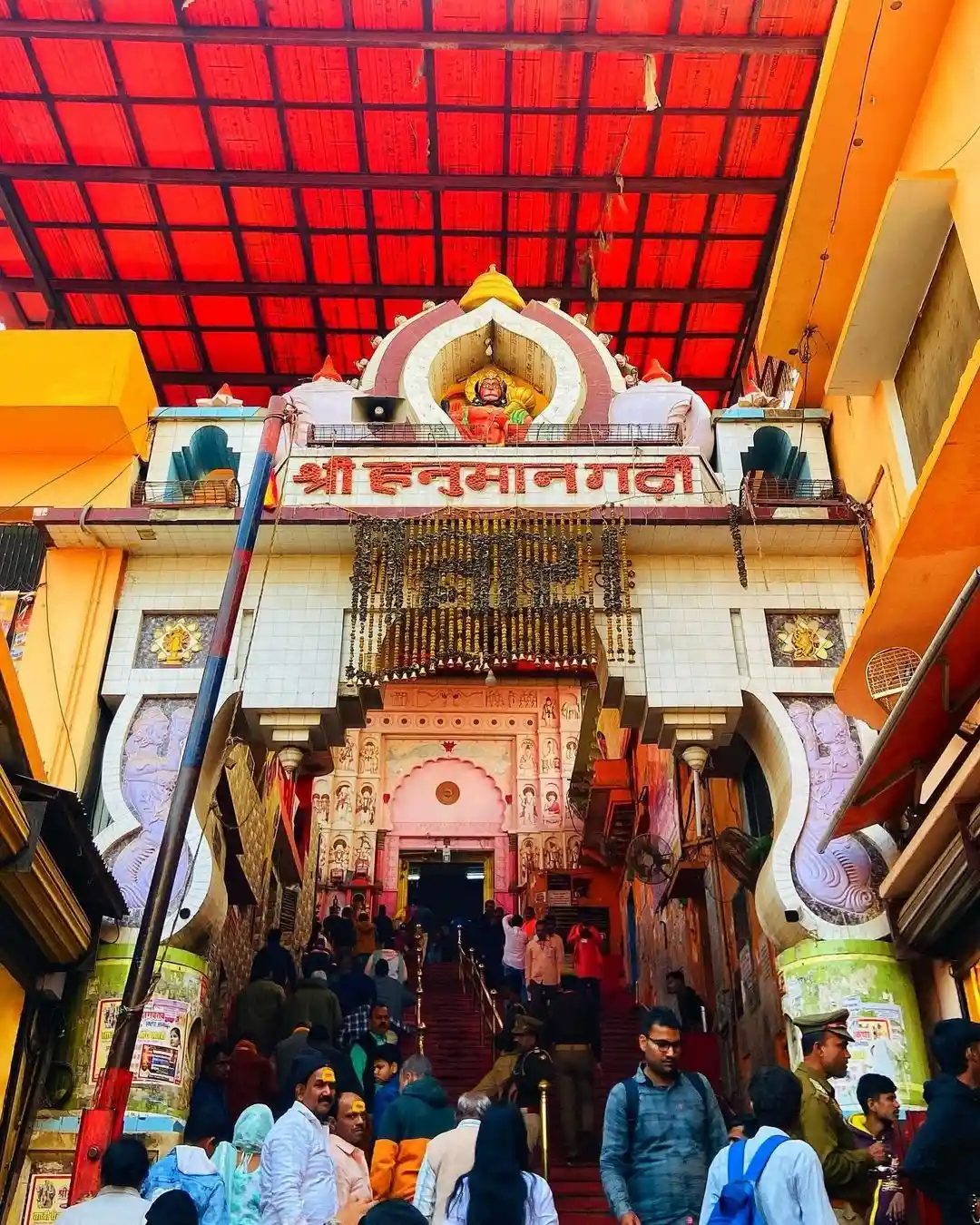
Historical Overview of Hanumangarhi, Ayodhya
The Hanumangarhi Ayodhya history is as captivating as the city itself. The temple was built in the 10th century by the Nawab of Awadh, who is believed to have donated this temple to the Hindu saint Abhayaramdas. The rich history of Hanumangarhi Ayodhya is intertwined with mythological stories that narrate how Lord Hanuman chose this site to protect Ayodhya and its people. According to popular belief, Lord Hanuman took up residence at this spot to keep a watch over Ayodhya, the birthplace of his beloved Lord Rama.
The temple’s design showcases the splendor of old Indian architecture. The 76-step staircase leading up to the temple is steep, symbolizing the challenging journey devotees must undertake to reach Lord Hanuman. The climb itself is seen as an act of devotion, reflecting the trials and challenges Hanuman himself faced in his service to Lord Rama. At the top, devotees are greeted with a serene atmosphere that exudes peace and tranquility.
In addition to its historical significance, the temple is a testament to Hindu-Muslim unity, as the Nawab of Awadh played a crucial role in its establishment. This harmonious relationship between different communities is still reflected in the fabric of Ayodhya today.
The Mythological Importance of Hanumangarhi
Ayodhya is often associated with Lord Rama, but it also holds great importance for devotees of Lord Hanuman. The Hanumangarhi Ayodhya history is rich with mythological tales that enhance the spiritual significance of the temple. One popular belief is that after helping Lord Rama regain his kingdom by defeating Ravana, Lord Hanuman chose this spot to protect Ayodhya from any evil forces.
Lord Hanuman is also known as the protector of the people, which is why the deity residing in the Hanumangarhi Temple Ayodhya is considered a guardian of the city. The temple enshrines a child-like form of Lord Hanuman, sitting on the lap of his mother, Anjani. This rare depiction is unique to Hanumangarhi and adds to its spiritual allure.
For many pilgrims, visiting Hanumangarhi is an act of devotion not only to Hanuman but also to Lord Rama. It’s believed that by seeking Hanuman’s blessings at Hanumangarhi, devotees can gain the grace of Lord Rama as well, enhancing the temple’s appeal among religious devotees.
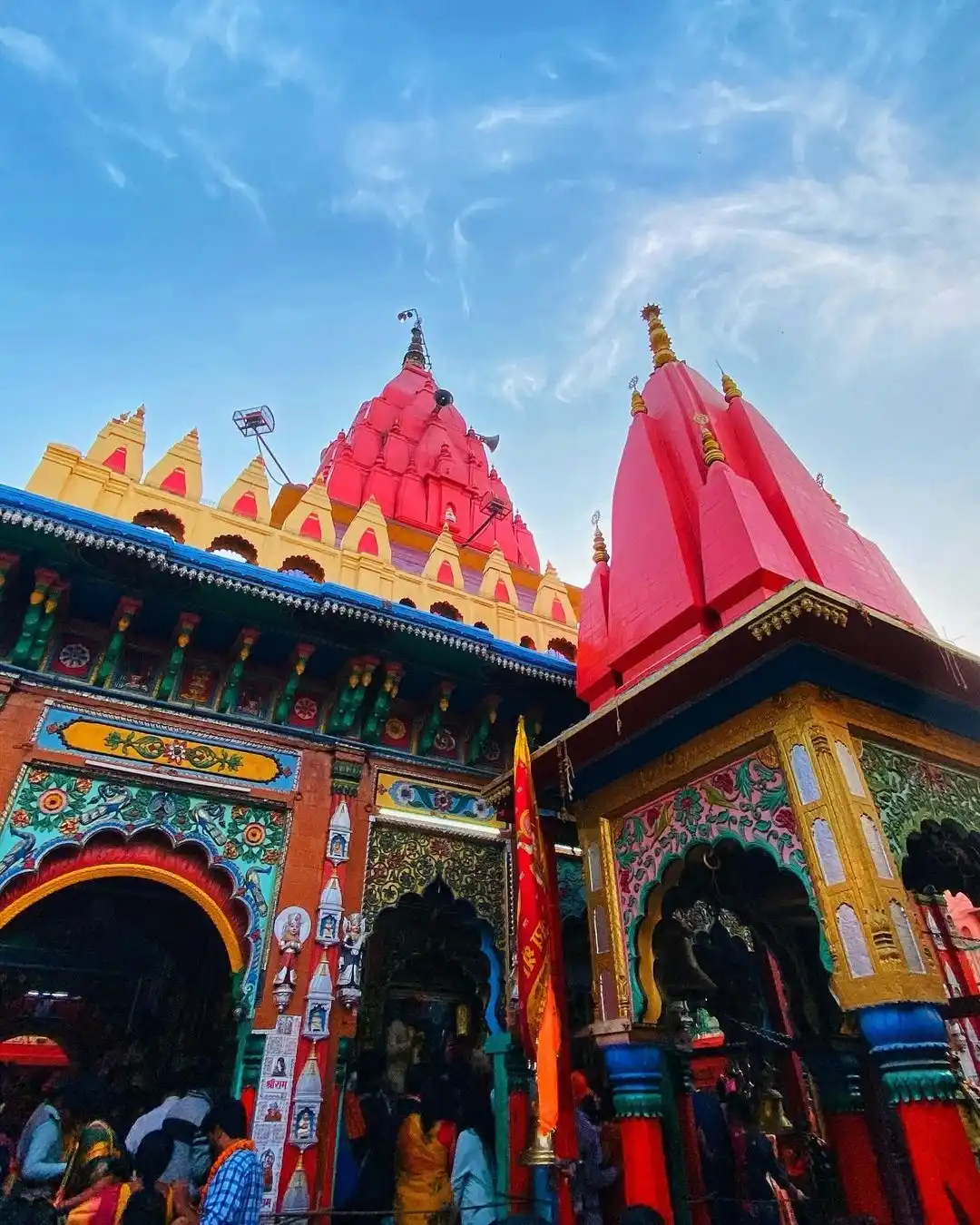
Architectural Grandeur of Hanumangarhi
In addition to being a place of worship, the Hanumangarhi Temple is a work of architectural wonder. The temple complex is fortified with tall walls and designed to resemble a fortress, symbolizing Lord Hanuman’s strength and protection over Ayodhya. The temple’s towering spires are visible from afar, inviting pilgrims to embark on a journey of faith and devotion.
The central idol of Lord Hanuman is the focal point of the temple, surrounded by an intricately designed sanctum sanctorum that reflects traditional Hindu architecture. Devotees ascend a steep flight of stairs to reach the sanctum, and upon entering, they are greeted with a peaceful and solemn atmosphere, where the echoes of prayers create a serene environment for worship.
The temple complex also houses smaller shrines dedicated to other deities, including Lord Rama, Goddess Sita, and Lord Lakshmana. These shrines complement the central Hanuman deity, symbolizing the interconnectedness of the characters in the Ramayana. The architecture of the temple, with its tall spires, expansive courtyards, and richly decorated altars, makes it a breathtaking sight for both pilgrims and tourists.
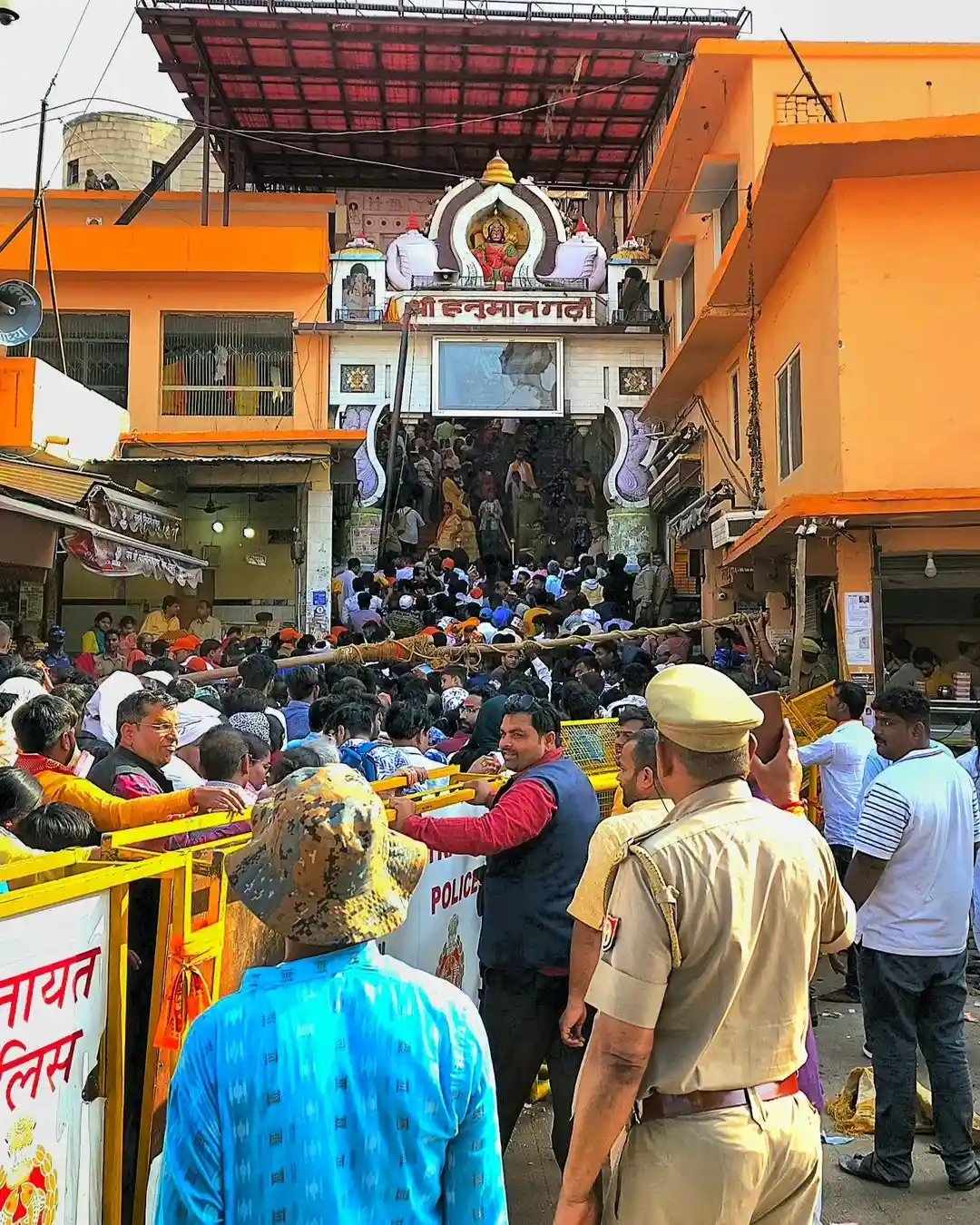
Significance of Hanumangarhi in Ayodhya’s Religious Tourism
One of Ayodhya’s most well-known sites, the Hanumangarhi Temple welcomes hundreds of tourists each year. Ayodhya is a city known for its religious and mythological significance, with the Ram Janmabhoomi (the birthplace of Lord Rama) being one of the most revered sites in Hinduism. Hanumangarhi stands as a complementary spiritual site, where devotees pay their respects to Hanuman before visiting other temples in Ayodhya.
Located just 1 km from the Ram Janmabhoomi, the Hanumangarhi Temple Ayodhya is often visited by devotees en route to the Ram Mandir. The temple’s strategic location makes it an integral part of the religious circuit in Ayodhya, and no visit to the city is complete without stopping by Hanumangarhi. Its proximity to the river Sarayu also adds to its sacredness, as pilgrims often take a dip in the holy waters before making their way to the temple.
Additionally, Hanumangarhi holds a special place during festivals like Ram Navami and Hanuman Jayanti. During these occasions, the temple is beautifully decorated with flowers and lights, and special prayers are held to commemorate the birth of Lord Rama and Lord Hanuman. The festive atmosphere, combined with the devotion of thousands of pilgrims, makes these events a grand celebration of faith.
Hanumangarhi Ayodhya Timings and Best Time to Visit
One of the key aspects of planning a pilgrimage to Hanumangarhi is being aware of the Hanumangarhi Ayodhya timings. The temple opens its doors to devotees early in the morning, with the first prayers beginning at 5:00 AM. The temple remains open throughout the day, with regular prayers and aarti (rituals) taking place at different intervals.
It temple remains open till 10:00 PM, making it accessible to devotees throughout the day but the early morning hours are the ideal time to visit Hanumangarhi because the temple is less crowded and has a peaceful environment. The morning aarti, held at 6:00 AM, is a beautiful experience for pilgrims, as it marks the beginning of the day with chants, bells, and devotional songs.
For those planning to visit during festivals, it’s important to note that the temple gets extremely crowded during Ram Navami and Hanuman Jayanti. These festivals bring thousands of devotees to Ayodhya, and special arrangements are made by the temple authorities to manage the influx of pilgrims. It’s advisable to plan your visit well in advance if you wish to participate in the festivities.
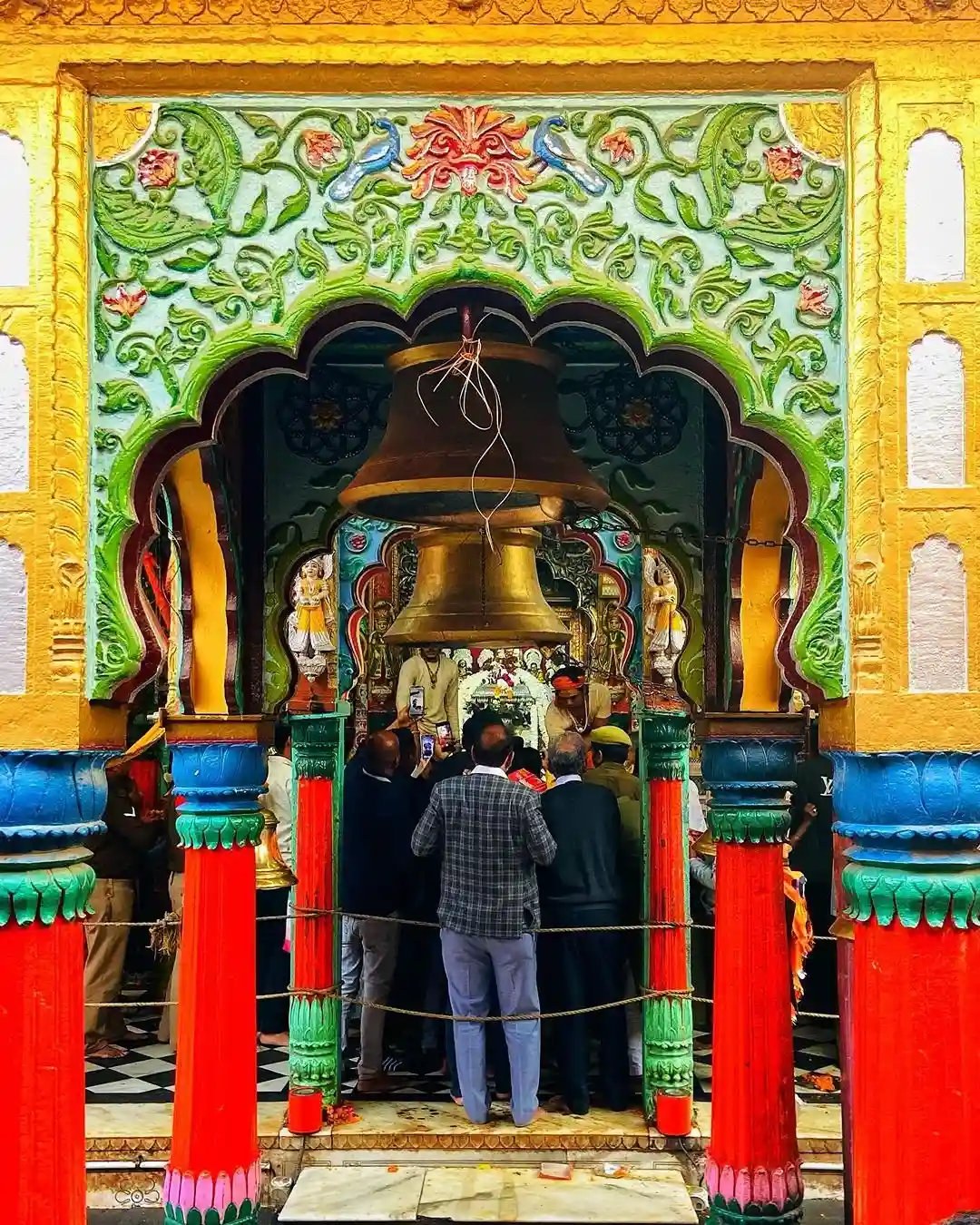
Accommodation Options Near Hanumangarhi Temple
Ayodhya, being a popular pilgrimage destination, offers a wide range of accommodation options for visitors. If you’re looking for a hotel near Hanumangarhi Ayodhya, there are plenty of options to choose from. These hotels cater to all types of travelers, from budget-conscious pilgrims to those seeking a more comfortable stay.
Several hotels are located within walking distance of the temple, making it convenient for visitors who wish to spend more time exploring the religious sites in Ayodhya. Some of the popular hotels near Hanumangarhi include Hotel Ramprastha, Hotel Panchsheel, and the Shree Krishna Palace. These hotels offer basic amenities like clean rooms, dining facilities, and proximity to the temple, ensuring that your stay is comfortable and hassle-free.
Near the temple are a number of dharamshalas (pilgrim guesthouses) for those looking for a more immersive experience. These guesthouses offer a more spiritual environment, allowing pilgrims to stay in close proximity to the temple and participate in daily prayers and rituals.
Tips for a Memorable Visit to Hanumangarhi
- Arrive early: To make the most of your visit, try to arrive at the temple early in the morning. The early hours are not only more peaceful but also offer the chance to participate in the morning aarti, which is a beautiful experience for devotees.
- Dress appropriately: As with most temples in India, it is important to dress modestly when visiting Hanumangarhi. Traditional attire such as sarees or kurtas for women and dhotis or kurtas for men is recommended.
- Keep your belongings safe: The temple can get crowded during peak times, especially during festivals. It’s important to keep your belongings safe and secure while visiting the temple.
- Respect the customs: Be sure to observe the local customs and traditions when you visit the temple. Remove your shoes before entering the temple premises, and avoid making loud noises or disturbances inside the sanctum sanctorum.
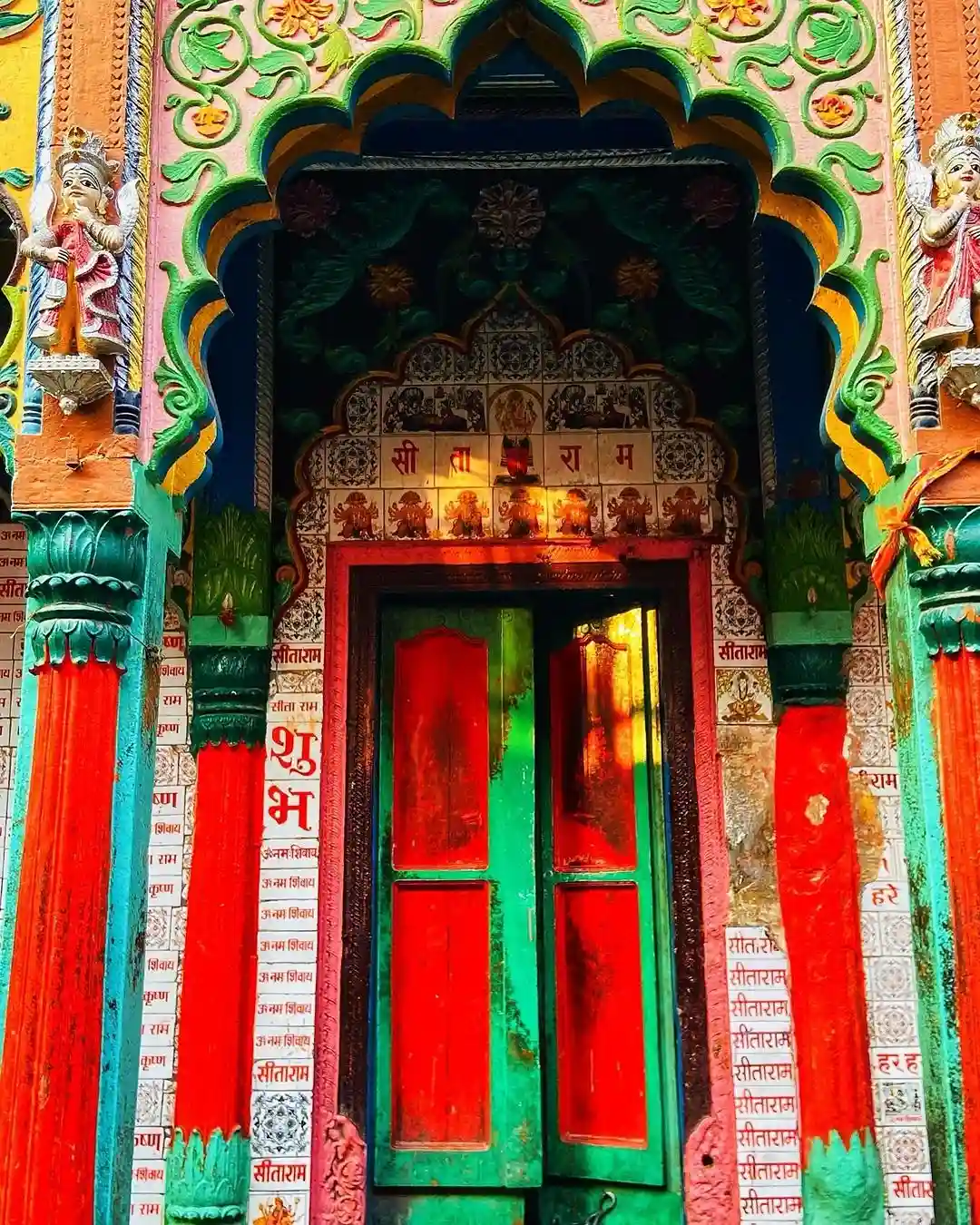
Conclusion
The Hanumangarhi Temple Ayodhya stands as a testament to the spiritual significance and historical grandeur of the city. Whether you are captivated by the rich Hanumangarhi Ayodhya history, its awe-inspiring architecture, or the mythological stories associated with Lord Hanuman, a visit to this sacred site is a deeply enriching experience.

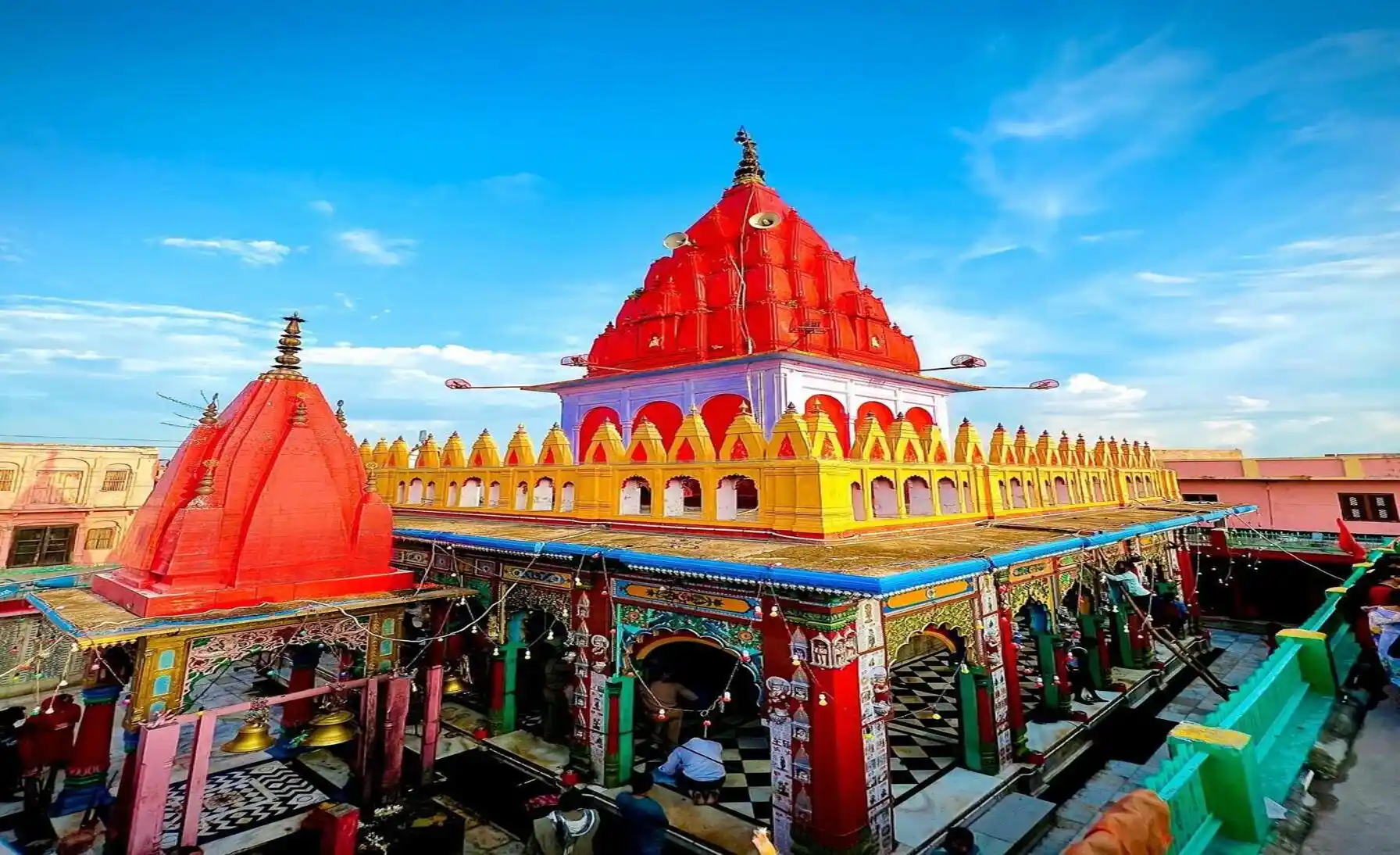
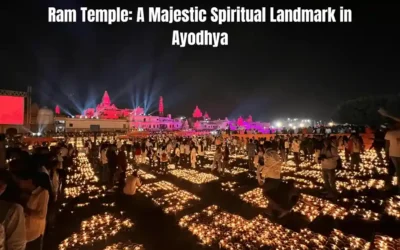


0 Comments